Universities and their campuses have always inspired me, and the UNSW campus was no different. Tall, serious buildings and a green campus with a central avenue that climbs up as you walk into the heart of the campus reminded me of my alma mater in Mumbai.
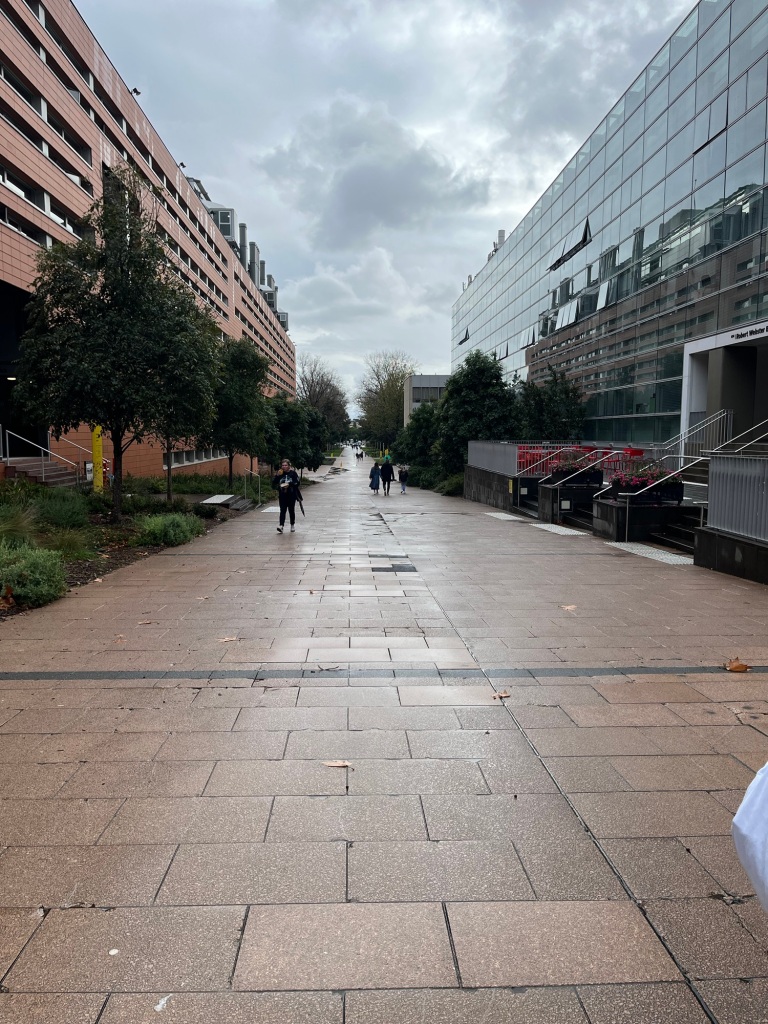
Funnily, we identified fellow visitors from the ubiquitous Singapore umbrella they carried. The 7-Eleven stores in Singapore sell a foldable navy-blue umbrella with red and white flowers. We saw our respective umbrellas and broke into broad smiles, “From Singapore?” It was a happy coincidence to meet them there.
We were on a campus tour conducted by two students, and their perky narrations cheered us all up despite the cold, rainy weather. I was too overwhelmed to ask the guides any intelligent questions, but fortunately, the kids in our group had their lists ready.
My favourite part of the tour was seeing Gandhiji’s bust on the library lawn. On reading up, I found out that it was unveiled in 2010 by the then Consul General of India and was a gift from India to the university. It is the only University in New South Wales to display a bust of Mahatma Gandhi. They commemorate Gandhiji’s birth and death anniversary every year.
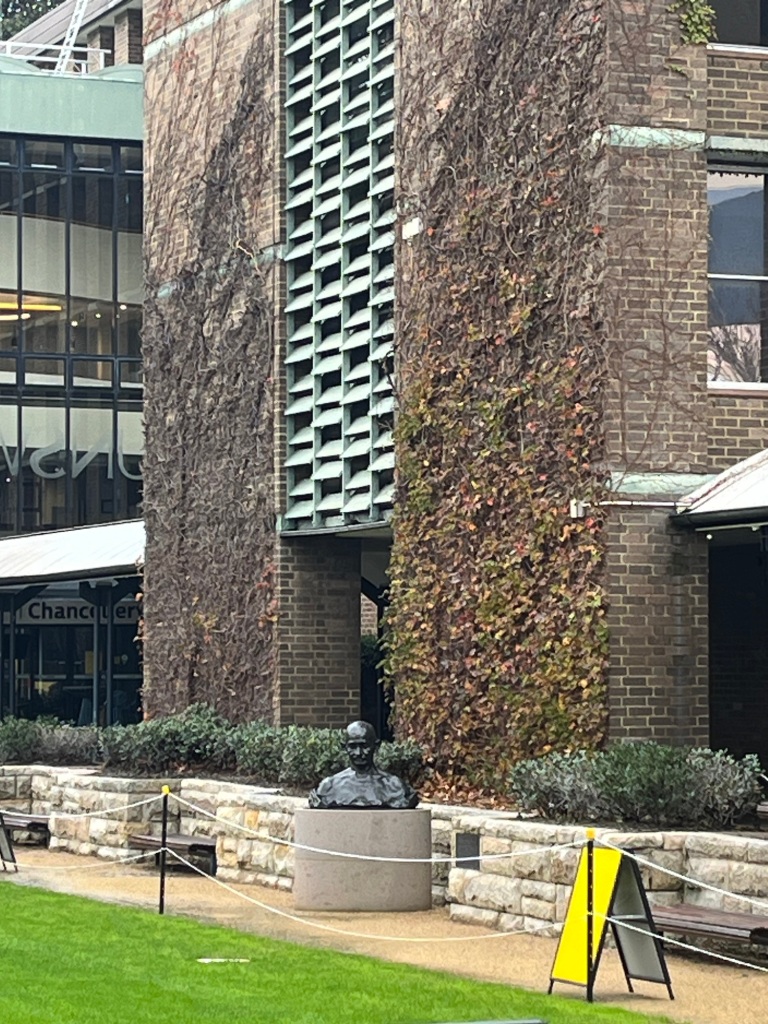
After being suitably impressed by the university’s focus on research in various fields, we decided to explore the city ourselves. It helped that our cousin had flown down from Melbourne to give us company. He had hoped for warmer weather but was surprised by colder-than-usual Sydney, a testament to abnormal weather patterns this year.
The light rail or the Sydney tram system took us into the central business district, where we got down at the first stop, which struck our fancy. QVB, or Queen Victoria Building, proved to be the opposite of what we thought it might be. I was expecting a historical landmark because it was built in 1898. Even the mention of something built in the 1900s makes my daughter gape at the antiquity of the structure. It does not matter if it was the early 20th century or later and whether it was edifices or people. (‘You both were born in the same century as the two World Wars. Yikes!’)
QVB turned out to be just a modern marketplace with five levels, and it was always meant to be a marketplace, whereas I was hoping for a transformation story. Nevertheless, there were some quaint features, like the elegant name boards hung outside every shop and the dainty ‘Ladies Powder Room’ sign outside the restrooms.
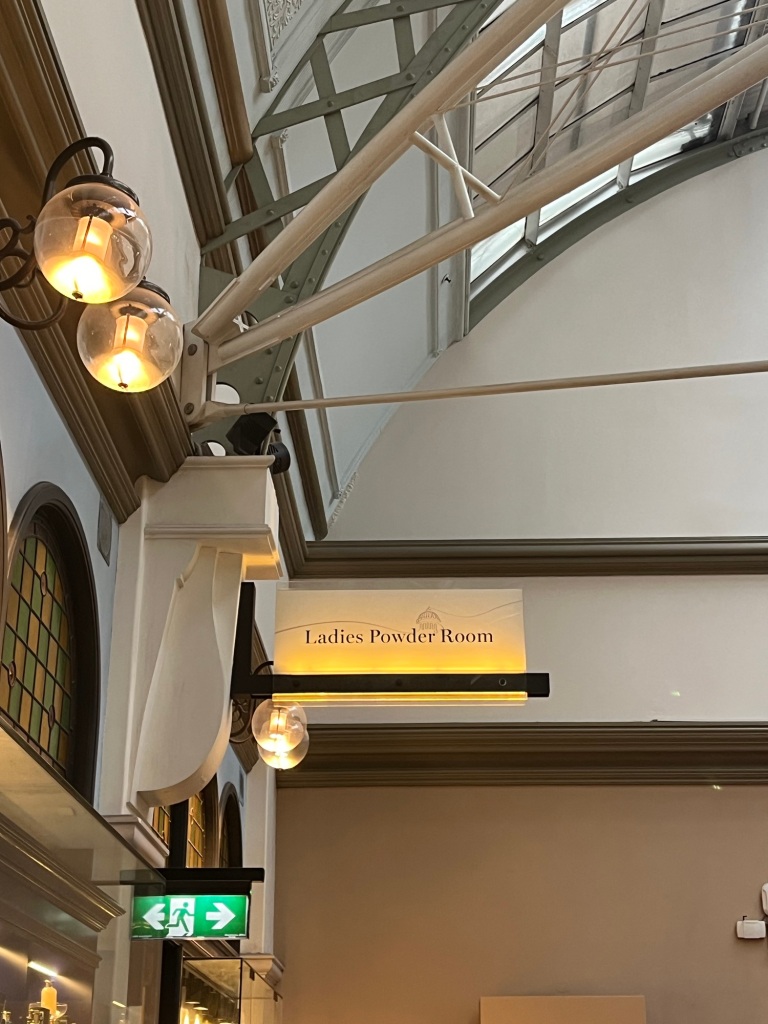
The shops belonged to the brands that you see in any major mall in this world, nothing extraordinary. The stained glass was beautiful as was the suspended clock tower in the centre.
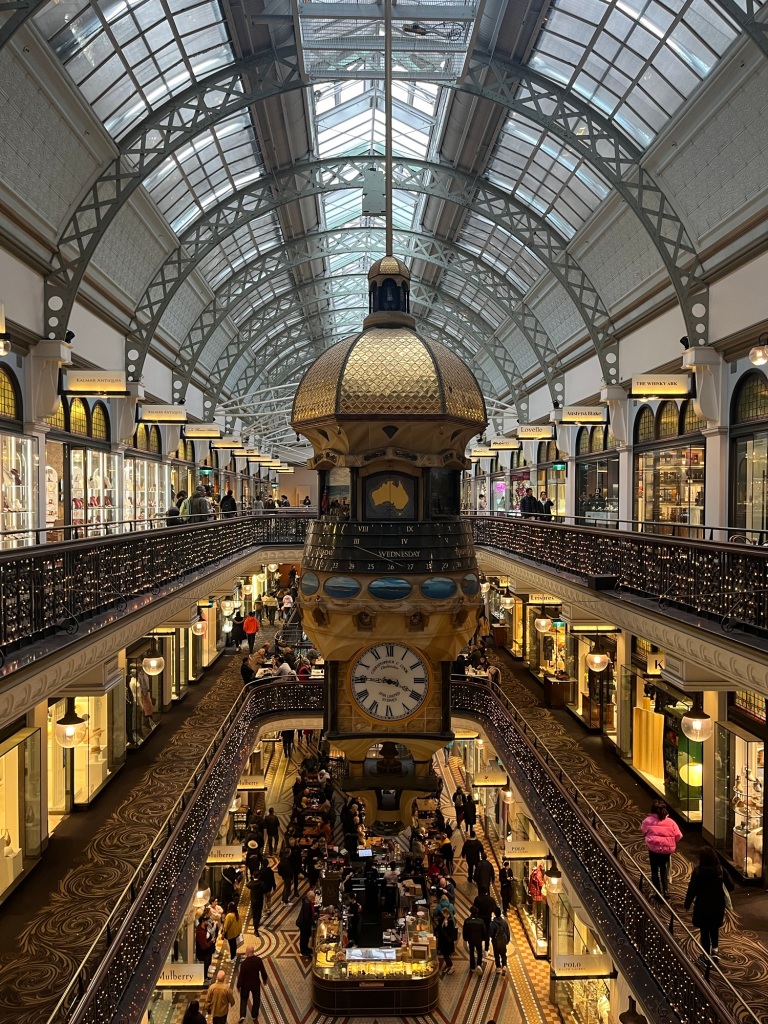
If time and hunger did not protest, I would have spent some time loafing in one of the corridors where, bang in the middle of the building, was a piano. Several pianists hung around patiently waiting their turn to let their fingers frolic on the keys. We listened until our tummies reminded us that we hadn’t eaten anything after the morning brunch at a local café near our apartment. Unlike my family, I had opted for a vegan bowl, which I did not finish. Of course, I packed it for home. It did not taste any better the next day.
A cursory glance at the restaurant menus in QVB did not motivate us. We were mightily hungry, cold, and we all dreamed of something spicy.
We decided to find an Indian restaurant at Surry Hills, where the streets are lined with restaurants giving off heady smells of masalas. I found a dish to my liking. It was called the Madras Chicken Curry, and although I have not had something like that in Madras, the tangy and spicy flavour was perfect for the cold and dark evening. Unfortunately, we ordered twice from the same restaurant during the week, but they failed to replicate that genius of a dish. Their inconsistency made me agree with their tagline, ‘home-style Indian cooking.’ It doesn’t matter what you ask for; what you get from the home kitchen is the dish of the day, whether you like it or not.
The next day, we headed to the Australian Museum precisely as scheduled. And what a weather it was. It was perfect for walking with no rain and the wind not so bitingly cold. We strolled through Hyde Park, happy to recognise the hibiscus flower among various unfamiliar plants and trees.
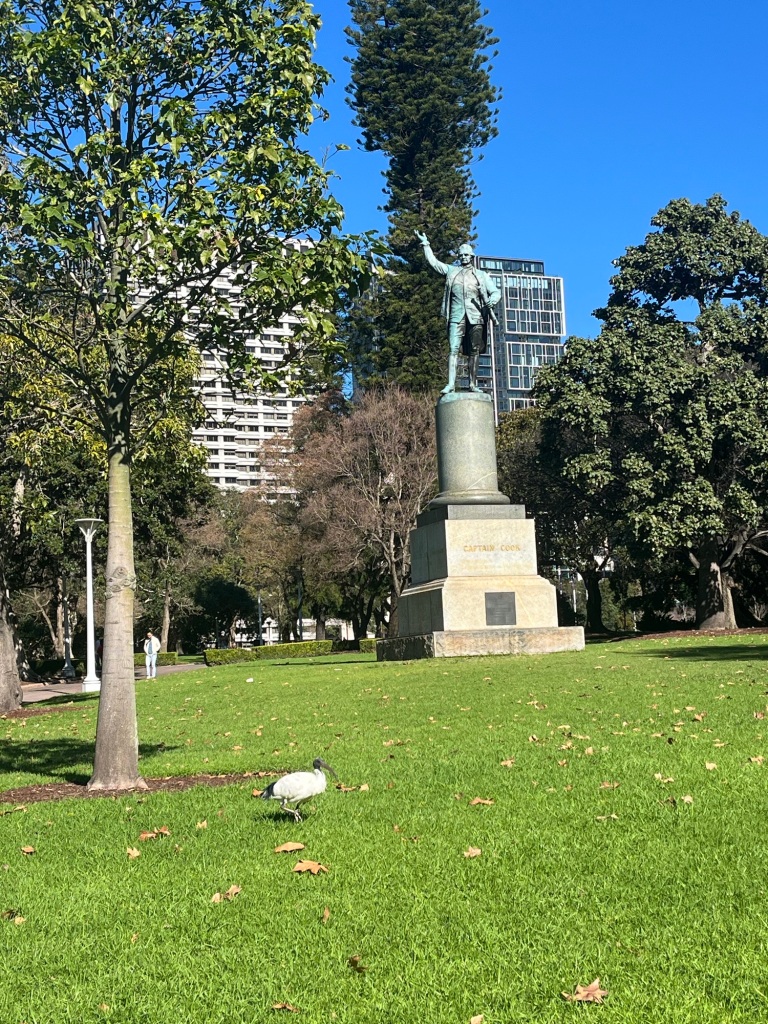
The Australian Museum is a treasure trove of archaeological, natural, and human history artifacts.
The First Nations people have a special wing in the museum where their rich traditions and heritage are displayed along with lessons from their Indigenous wisdom. Most of their beliefs resonate with the challenges we face today. A solution might not lie in their ancient lifestyle but in the principles that guided how they lived and interacted with the world around them.
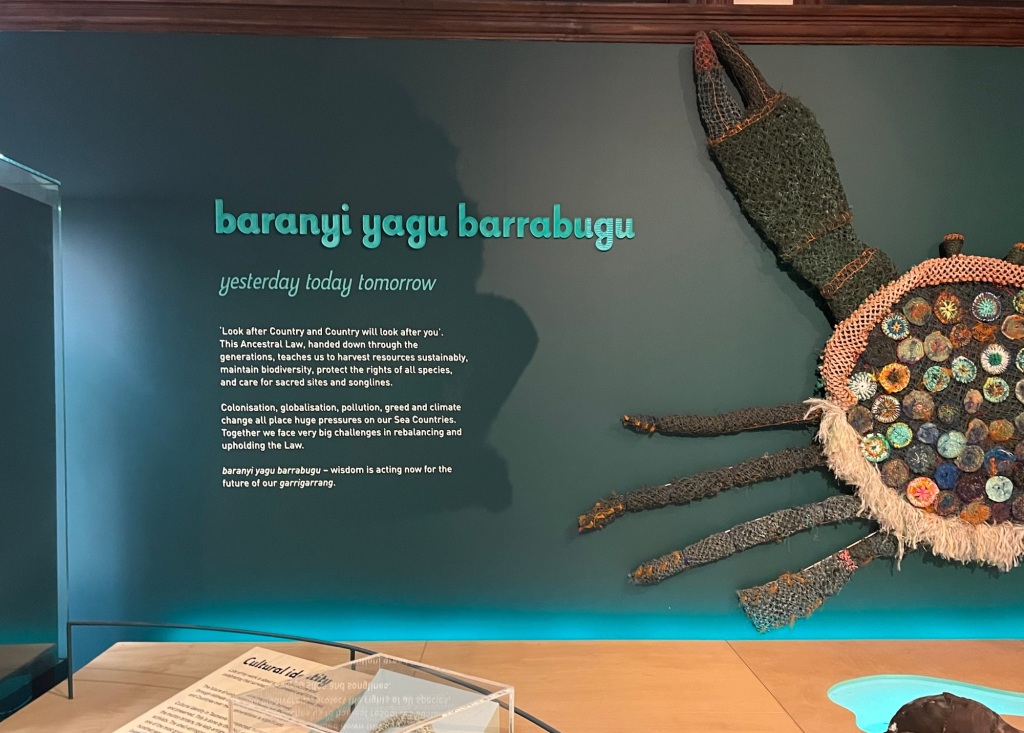
It was heartening to note that the Indigenous people are being respected and appreciated for what they are, however late the appreciation might seem. Throughout Sydney, there are notes of gratitude for the original community to whom the land belonged and on which the modern edifices were built. Better late than never.
The natural world exhibits were special because they gave a sneak peek into Australia’s diverse and unique species, like the Dingo and the Tasmanian Devil. As with any museum, the few hours we spent were insufficient to assimilate and absorb everything they offered.
It is a terrific place for children to learn about the culture of the land, its people, and the local flora and fauna. The prehistoric wing looms large with its neatly labelled exhibits and the giant dinosaur skeletons grazing the roof. We found hordes of kids enjoying the display and unwilling to leave the place.
On our walk back from the museum, we peeped into St. Mary’s Cathedral and were pulled inside by the silence and calm. It was so peaceful that we might have spent the entire evening there had it not been for the darkness falling swiftly outside.
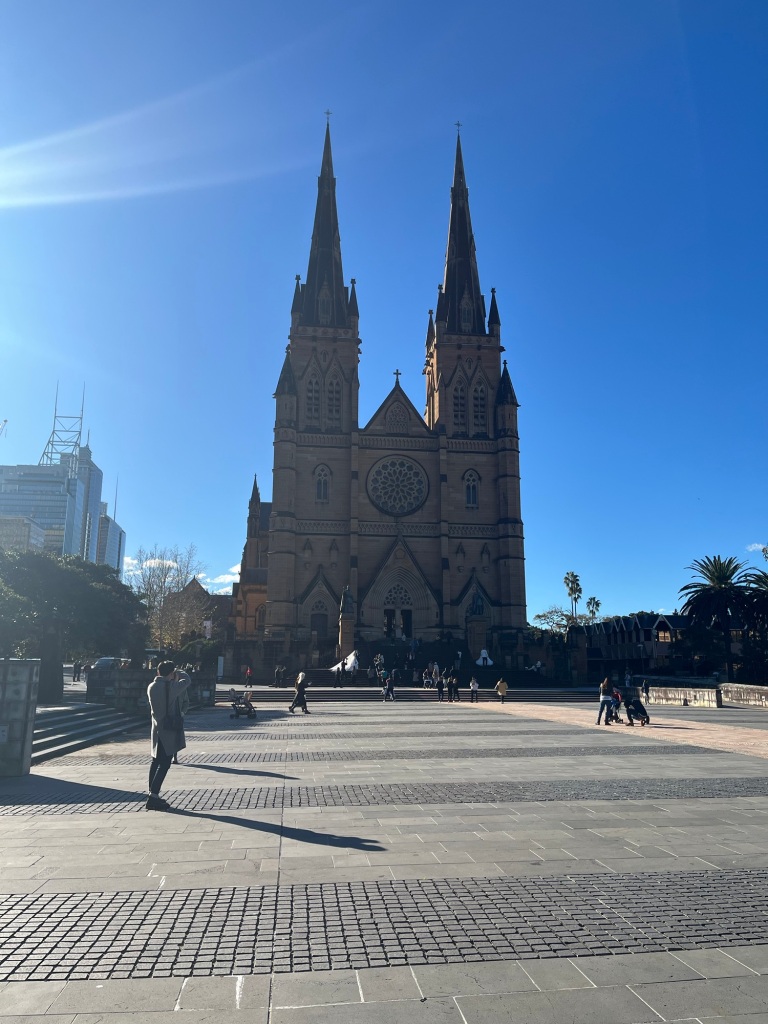
Before I end the post, I must mention that the lunch at the casual dining restaurant, Bistro Gadi, at the top of the museum and overlooking Hyde Park, was one of the best I had in Sydney. Though limited in scope, it was healthy and flavourful. Looking at their fare, I felt the restaurants back home should update their menus to put meat and vegetables under the Mains and rice, noodles, or any starchy items under the Sides. It makes a big difference to the nutritional balance of the plate.
We ended the day with splendid cups of coffee and hot chocolate at The Rocks Market, a place, which according to my teen, gives ‘proper Sydney vibes.’ I would agree after having the coffee and gaping at street stalls selling kangaroo and crocodile meat snacks.
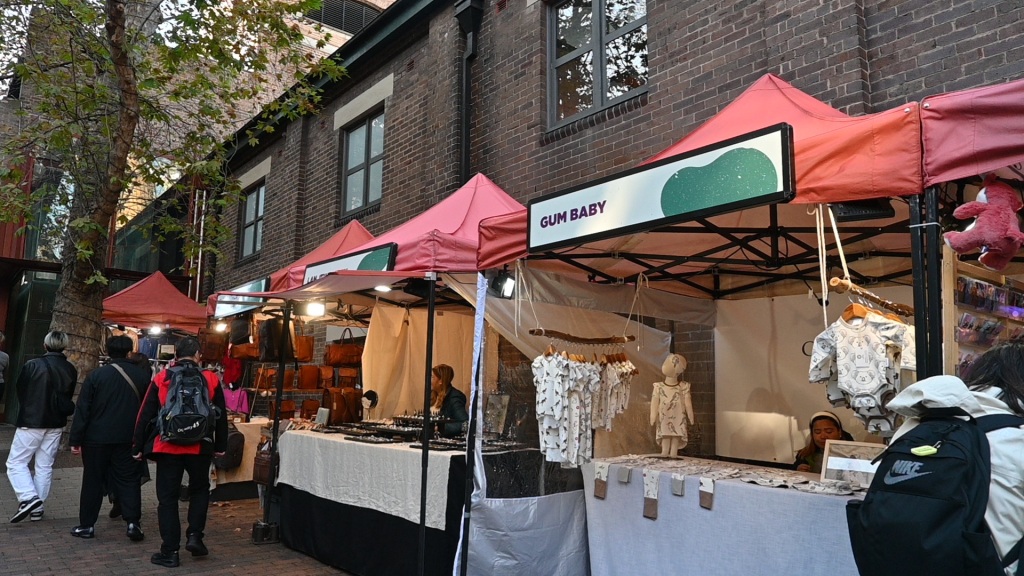
On our way to The Rocks, we got a distant view of the Sydney Opera House, one of the must-visit places we had on our list.
P.S. You can read part 1 of this travel series here. And part 3 here.